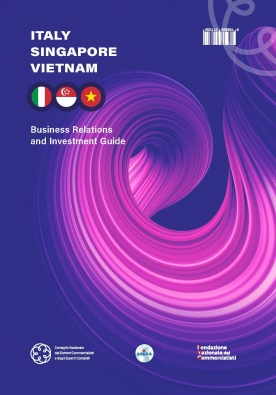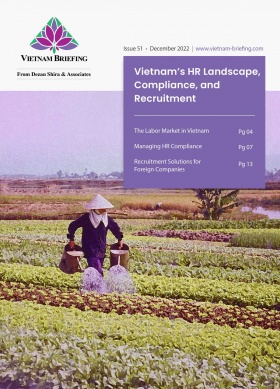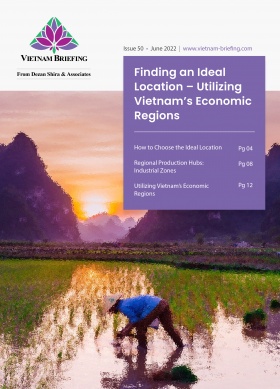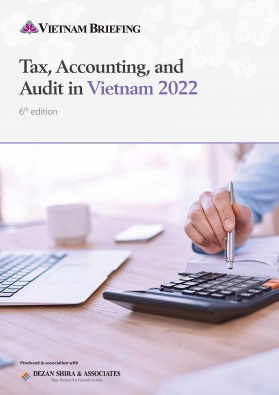Customs, Trade Reform: the EVFTA Two Years in Review
On December 9, the European Chamber of Commerce in Vietnam (EuroCham) held a workshop for EVFTA stakeholders to discuss what progress has been made since the agreement came into force. Here’s what they said.
The Two years of EVFTA Implementation in Vietnam: Where do we stand? conference, organized by EuroCham, was held earlier this week with stakeholders from all sides of the agreement in attendance.
The focus of the event was the key successes and ongoing challenges of the EVFTA’s implementation over the past two years. Specifically administrative procedures in terms of customs and the import and export of goods.
The conference also covered the EVFTA with regard to Intellectual Property Rights (IPR). It also provided updates on commitments made relating to the services sector.
Overview of the EVFTA’s key achievements
At the event, Dr. Carsten Schittek, Minister Counsellor, Head of the Trade Section, EU Delegation to Vietnam, said the EVFTA is one of the most comprehensive FTAs Vietnam has signed. This was clear through the positive impacts on Vietnam’s economy and the diversity of sectors that it covered, he said.
This was all the more meaningful when placed in the context of the COVID-19 pandemic when borders were closed and both the EU and Vietnamese economies were facing a number of challenges related to the virus.
In this period, Vietnam’s imports and exports both saw tremendous growth, with exports from Europe to Vietnam rising by 16.5 percent. Additionally, the first half of 2022 observed higher EVFTA utilization and spillover effects than the entirety of 2021. This was particularly true of rice, footwear, and plastics.
Furthermore, in terms of investment, Europe’s FDI registered capital in Vietnam was US$1.4 billion in 2021.
See also: Eurocham Business Climate Index
IPR enforcement has also been a stand-out contributor to the success of the EVFTA. Vietnam has updated its IP law with multiple amendments to meet EVFTA requirements. Specifically, with regard to the automatic protection of 169 EU Geographical Indicators (GI) and 39 Vietnamese GIs.
Customs and trade facilitation
One of the highlights of the EVFTA is the administrative and procedural reforms in customs and trade facilitation.
Customs clearance
The EVFTA has impacted the customs clearance of imports, reducing the average processing time by half. The cost to carry out customs procedures has also been significantly reduced. In addition, up to 94 percent of importers and 98 percent of exporters are now using e-documents.
The EVFTA also set goals for reducing the number of Specialized Management and Inspection (SMI) goods, 82,698 as of 2015, by 50 percent and reducing the ratio of imported consignments to less than 10 percent. This number has so far been reduced by 12,600.
In terms of sanitary and phytosanitary (SPS) and technical barriers to trade (TBT), Vietnam has undergone a number of reforms. For the pharma industry, medical devices classification, certification, and registration those reforms are already well progressed.
See also: Spain, Poland, Italy, Hungary Pharma Companies Gain Equal Access to Vietnam Market
Vietnam also eliminated 29 taxes and levies on automotive products and new technical requirements, based on EU standards, are now in effect.
There is also a comprehensive plan to designate customs as the main checkpoint for quality and food safety inspection. This has been proposed with regard to the agricultural sector.
Movement of labor
Vietnam allows entry and temporary stays for four specific types of EU citizens entering Vietnam for business purposes. This includes: business visitors, managers, directors, and specialists.
The EVFTA also allows for trainee employees to enter Vietnam for up to 1 year. This will be implemented on 1st August 2023.
But despite these reforms, issues with the visa process have been raised.
Professor Claudio Dordi, former Team Leader of the EU-Vietnam Multilateral Trade Policy Project expressed concerns, at the conference, that in practice there were still problems. These include: lengthy submission procedures, unclear explanations of visa rejections, and difficulties for applicants outside of Hanoi and Ho Chi Minh City. He also noted that not all EU citizens enjoy visa-free entry.
Work permits
A number of additional work permit exemptions for EU citizens have also been introduced. For example, for intra-company transferees in 11 sectors and those entering Vietnam to hold positions of manager or specialist.
Similar challenges to those listed above, including lengthy procedures in submission and processing time, are also obstacles to the execution and timely provision of documentation for foreign workers.
Services sector
In the services sector, Vietnam has also made a number of reforms. This has created a number of opportunities for further cooperation and investment between the EU and Vietnam.
- Banking services: Vietnam has “committed to consider” allowing EU credit institutions to own up to 49 percent of the charter capital in Vietnamese joint-stock commercial banks (excluding the four national banks).
- Insurance services: Vietnam committed to permit cross-border ceding reinsurance, allowing establishment of a reinsurance company branch. The revised Law on Insurance Business 2022 also allows foreign ownership to account for up to 100 percent of chartered capital of insurance or reinsurance companies.
- Telecommunication services: Vietnam has allowed the EU to set up 100 percent foreign-owned companies for non-facilities-based telecommunications services.
- Transportation services: Vietnam will allow foreign ownership to extend from 49 percent to 51 percent. Specifically, Vietnam will gradually give greater market access to EU international maritime transport and shipping.
- Distribution services: the requirement for economic needs tests (ENT) will be abolished by August 2025.
Key takeaways
In general, the EVFTA is preferable to other FTAs with respect to its impacts. Besides tariff removal, the EVFTA has improved the transparency of legal and trade procedures by transforming administrative processes.
The EVFTA in its first two years has been relatively successful. Though challenges remain, it has, on the whole, produced tangible outcomes to the benefits of both Vietnam and the EU. These benefits are set to solidify as reforms continue as the EVFTA heads into its third year in operation.
About Us
Vietnam Briefing is published by Asia Briefing, a subsidiary of Dezan Shira & Associates. We produce material for foreign investors throughout Eurasia, including ASEAN, China, India, Indonesia, Russia & the Silk Road. For editorial matters please contact us here and for a complimentary subscription to our products, please click here.
Dezan Shira & Associates provide business intelligence, due diligence, legal, tax and advisory services throughout the Vietnam and the Asian region. We maintain offices in Hanoi and Ho Chi Minh City, as well as throughout China, South-East Asia, India, and Russia. For assistance with investments into Vietnam please contact us at vietnam@dezshira.com or visit us at www.dezshira.com
- Previous Article What No COVID-Zero in China Could Mean for Vietnam
- Next Article Unpacked: Vietnam’s US$15.5 Billion JETP Agreement








